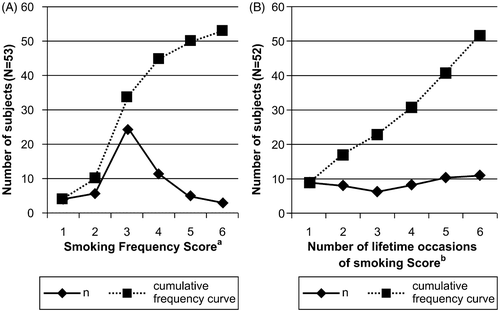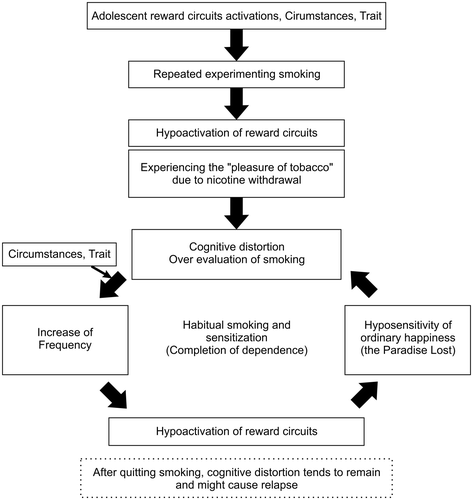Figures & data
Figure 1. Smoking frequency and experience when young people first experienced the “pleasure of smoking.” A total of 115 vocational students (age range: 19–29 years; mean age (SD): 22.4 (1.7) years; 102 male and 13 female participants) were surveyed. In all, 42 were current smokers, 10 former smokers, 18 nonsmokers who experimented with smoking, and 45 never-smokers. In all, 53 students (all of the current and former smokers and one nonsmoker who had experimented with smoking) answered they had experienced the “pleasure of smoking.” The average smoking frequency and the lifetime number of cigarettes smoked when respondents first experienced the “pleasure of smoking” are shown above. One subject did not answer regarding his lifetime number of cigarette smoked. aLess than 1 cigarette weekly (score = 1), less than 1 cigarette daily (score = 2), 1–5 cigarettes daily (score = 3), 6–10 cigarettes daily (score = 4), 11–20 cigarettes daily (score = 5), and more than 20 cigarettes daily (score = 6). b1–2 (score = 1), 3–5 (score = 2), 6–9 (score = 3), 10–19 (score = 4), 20–39 (score = 5), and 40 or more (score = 6). These categorizations followed those of the European School Survey Project on Alcohol and Drugs (Hibell et al., Citation2003).

Figure 2. Hypothetical anticipatory brain activity curve in the course of development of addiction, according to the Paradise Lost theory.



